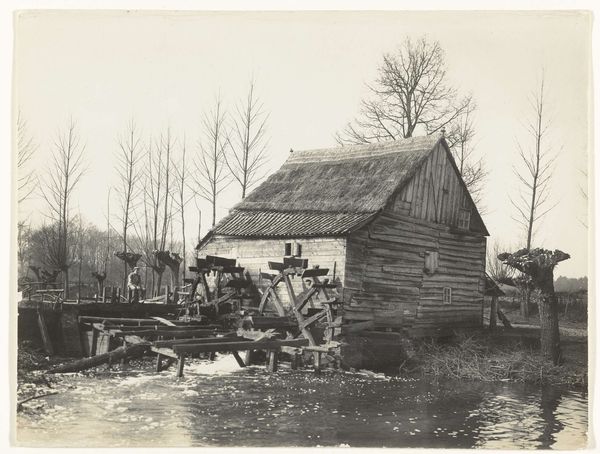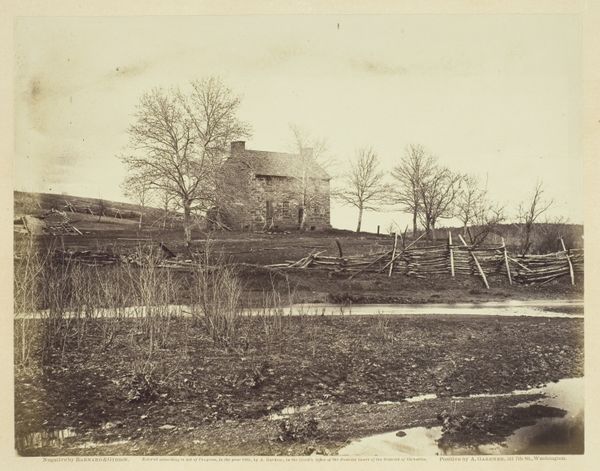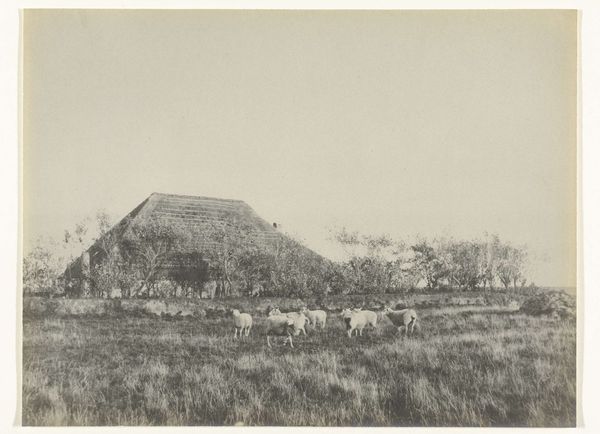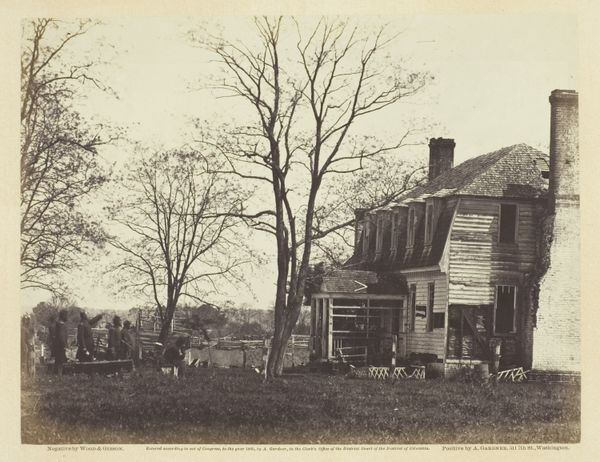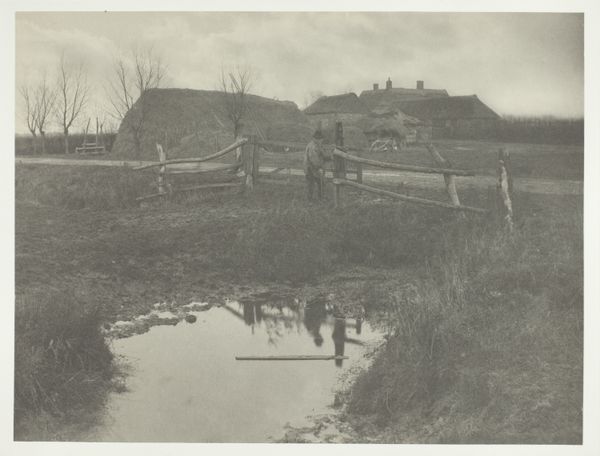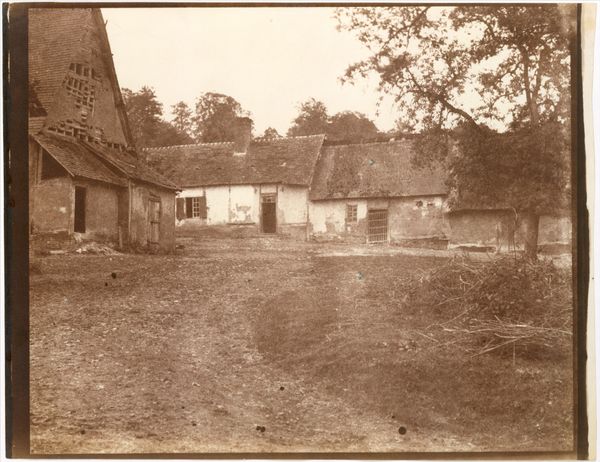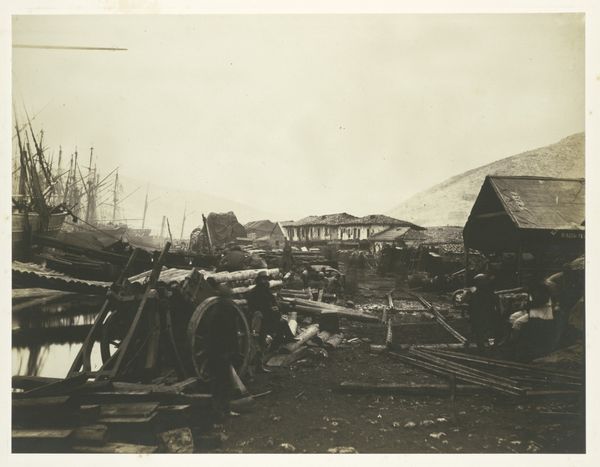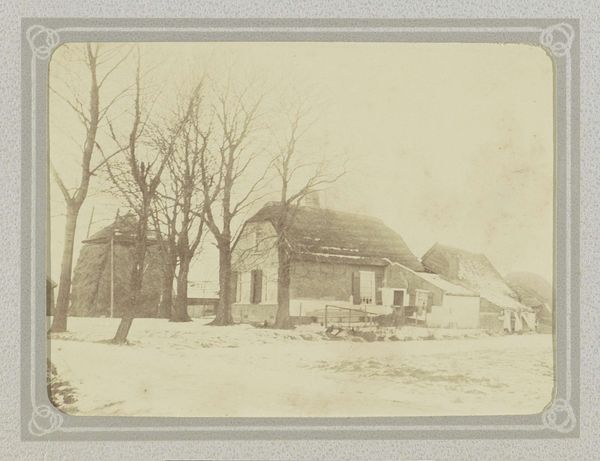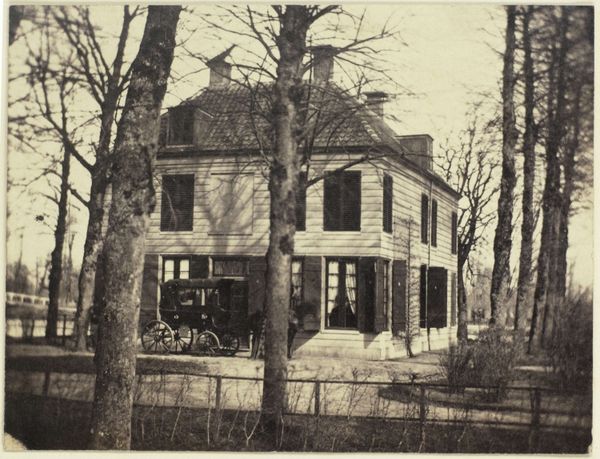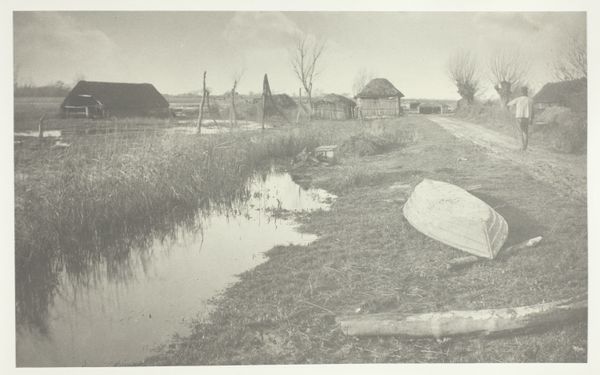
print, photography, gelatin-silver-print, wood
#
still-life-photography
#
dutch-golden-age
# print
#
landscape
#
photography
#
gelatin-silver-print
#
wood
#
realism
Dimensions: height 171 mm, width 228 mm
Copyright: Rijks Museum: Open Domain
Curator: This is "Watermolen of Nijenbekermolen bij Voorst, Gelderland," a photograph by Richard Tepe, likely taken between 1920 and 1925. It’s a gelatin-silver print showcasing a watermill. Editor: There's a melancholy mood immediately evident. The monochromatic palette and leafless trees create a sense of starkness, though balanced by the rhythmic symmetry of the waterwheels and the textured surfaces throughout. Curator: Precisely. Watermills, historically, represent so much. They were the powerhouses of communities, driving industry, and life's continuity. Tepe captures the stoic presence of a rural life inextricably bound to nature's rhythms. Note also that the structure itself acts as a locus of the rural consciousness, providing an anchor. Editor: It's fascinating how Tepe uses light and shadow to sculpt the form of the mill. See how the wooden planks possess this tonal complexity that almost becomes sculptural. This detailed approach contrasts interestingly with the softer, more blurred trees in the background. There’s a clear understanding of semiotics at play here, highlighting that every structural line contributes meaningfully to its design. Curator: The individual near the wheel perhaps signifies humanity working in symbiosis with the environment; the symbolism around that relationship evokes that same rural ethos that’s still potent today. Do you sense echoes of earlier Dutch Golden Age landscape painting tradition in the visual encoding here? Editor: Undeniably! Although captured through a photographic lens, we see the classic use of compositional balance reminiscent of those 17th-century paintings. A direct connection is built in our understanding of art. Curator: And speaking to a viewer today, who is increasingly disconnected from the sources of energy production that determine quality of life, the piece offers an invitation to reflection: How can we get back to basics with regard to power and community? Editor: From a formal point, of view, I also appreciate the photographer’s commitment to simplicity, avoiding artificial manipulation for direct, engaging imagery. Overall, it’s both timeless and firmly rooted in its historical and material conditions. Curator: Tepe seems to whisper across a century about humankind’s intimate bonds with our spaces. Editor: I can't agree more, ending in an authentic echo—simple structure.
Comments
No comments
Be the first to comment and join the conversation on the ultimate creative platform.
